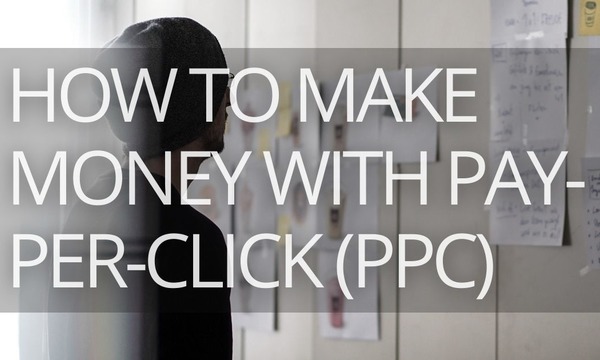Design is all around us today. A great website is crucial to your marketing campaign. Only a well-designed social media post will get the attention you hope for. A badly designed brochure will not bring you any clients. Therefore, even if you are a pay-per-click advertiser, you must consider educating yourself about website design.
If you are wondering what PPC has to do with web design, this article is for you. And if you ever need to create designs in your marketing job, read this article before calling a trained graphic designer.
Following the rules in this post, you can create visual ads, website layouts and logos. And what is more important, it will help you to see whether you’ve made a good or a bad design.
Take some time to learn these simple rules, which will help bring your brand’s message into the spotlight.
What is graphic design?
Graphic design is about creating visual content that helps communicate messages to an audience. Brands use graphic design in their logos, marketing materials, ads, website graphics, documents, and emails.
The main elements that make up the graphic design are colour, typography, line, shape, space, size, and hierarchy.
What does PPC have to do with graphic design?
Graphic design is not just about how your website or ad looks. Above all, it is about how effective your message is, how attractive it makes your products look and how many people will buy it from you!
After all, if users don’t like what they see or experience on your landing pages, your PPC campaign will not perform well , no matter how carefully you choose the keywords.
Although the PPC department interacts with the design team less often than with others, their role and feedback are crucial to the company’s success. The marketers have the numbers and can determine when an ad is performing poorly. And while a lousy performance might be due to many things, bad landing page design could be one of them.
Therefore, both marketers and designers must be on the same page and working towards the same goal before starting work on the campaign. Every brand needs to understand that pay-per-click brings results when the website is optimised to convert.
Here are a few things PPC marketers could be looking for in a website or a landing page:
Visual attractiveness
A good design will help catch users’ attention. Web design must appeal to the target intended audience of the brand.
Ease of navigation
The information on the website must be easy to find. It also has to be accessible, visible and straightforward in order to be read quickly.
Responsiveness
The website must be accessible on all devices, including a desktop, laptops, smartphones, and tablets. Responsiveness is not only crucial to customer satisfaction, but it is also a great bonus if you want Google to promote your page. Google rewards sites that are designed for multiple devices.
Rules of thumb in design for non-designers
Now, if you need to create or evaluate design, here are nine crucial things to pay attention to.
1. Align text and visual elements
Remember that your text will be read from left to right unless you design for an Arabic country. Therefore, you need to align most of your text to the left. You can move it to the centre if it is a title and it needs to be visible. Avoid single words as the last line of a paragraph. Your text is often essential to your design, so make sure it’s easy to read.
When you’re aligning all the other design elements, neither guess, nor think of just what looks good. Alignment is a design principle that helps you convey the right message to your audience. Always use guidelines, rulers, and margins. These simple rules really make your design more professional.
2. Use fonts wisely
There are thousands of fonts out there, so choose wisely. Choose two contrasting fonts, and use one for the main text and the other for the headings. Keep font usage consistent. Your task is to make content pleasant to read and effortless to scan.
However, we advise against using playful fonts unless you are designing for children. Goofy ‘Disney’ fonts are hard to read and not very professional.
If you are designing for the web, make sure to stick to web-safe fonts.
In terms of font size, keep font sizes at or above 12px if possible, especially for paragraph text. It is important if you want to be inclusive. People with poor eyesight and older people might view your design. Create to meet all needs.
3. Combine colours with a purpose
When in doubt, choose black and white as your default colours. If you want to introduce more shades, ensure that your combination consists of light and dark colours. Contrast is your friend here. Always check how visible your text is on the background colour that you’ve chosen.
Remember that it is essential to get a good colour combination and to apply it to the correct elements on the page. Even if you found a couple of colours that are a perfect match , take your time to decide which one should be the background and which should be the text.
Never use bright colours on text and make sure it is colour blindness accessible. Check out the tool called Vischeck that can help you test for certain types of colour blindness.
4. Follow the hierarchy
Three sections create a visual hierarchy of text: the headline, subheading, and body. These distinct sections make the design visually lighter and easy to navigate. It also allows the readers to scan the text and get the most important information or your brand’s message.
When creating the hierarchy, use different font sizes, weights, or colours.
5. Use ‘white space’
White space is often called ’empty’ or ‘unmarked’ space around or between visual elements in a design. And it is in your power to make good use of this space. The user welcomes white space. White space helps their eyes to navigate the page and determine the message. Moreover, a design with some empty space is more visually appealing than a cluttered one.
Don’t overwhelm the viewer with information! Be confident in your design. And remember that if you can say it with fewer words and show it with fewer images, you are a professional.
6. Always use margins
Margins are significant, and you need to use them. They separate the content from the edge of the paper and add an essential organisation to your design. Set your margins and work within that frame. The bigger the margins, the cleaner the design.
7. Choose authentic images
Our best advice to an amateur designer would be to invest in a photoshoot! An authentic personal image makes a big difference! You can sell your brand’s message much faster with just one good photo than with 50 stock images!
Bad photos can also turn people away from your brand, hurting your marketing campaign.
8. Keep it clean and simple
This is simple advice, but we cannot emphasise its importance enough. A good design is measured by something other than how much information you manage to fit into the page or how beautiful it looks. Above all, a good design is user-friendly. And most of the time, users want clean and simple!
Every design element you include must be justifiable; it has to have a purpose. If unsure, ask yourself these questions:
- What is the purpose of this image?
- Does it help the user to navigate if I put an arrow here, or do I want to include it because I think it’s cool?
- How does this colour tie into the brand’s message and fit the purpose of what I am creating?
- If I remove this element, will my design be worse-off ?
9. Get a third-party assessment
Unfortunately, it’s hard to accurately assess your own work, especially when it is something you designed. Everyone has different tastes, and other people find different things aesthetically pleasing.
And once you’ve created something that you find beautiful, it’s hard to judge. You are emotionally attached and might not see some obvious shortcomings . Therefore, having someone else audit your design for you is helpful. How easily can they navigate your site, find what they’re looking for, and perform different actions if it’s a website? If it’s a social media post, do they find it attention grabbing? Would it stop them scrolling? That kind of test will give you a more accurate picture of your creation.
Final thoughts
Next time you need to design something, don’t panic, even if you can hardly call yourself a good designer . Remember the few rules from the article and turn back to them when assessing your work. Use margins, think carefully about your fonts and colours. Try to use authentic images and keep the design as simple and clean as possible. User-friendliness should be your top priority, and it comes before beauty.


![30+ Best Alternatives to Google Analytics [Free & Paid]](https://blog.promonavigator.com/wp-content/uploads/2021/04/ga-alternatives-600-360-1.jpg)
